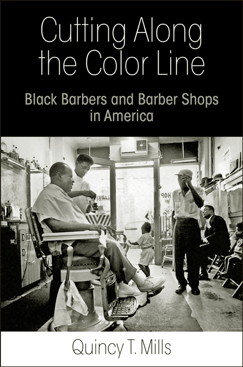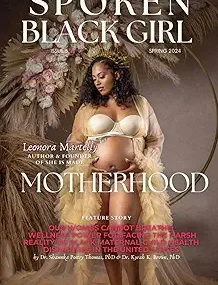
Black Barbers and Barber Shops in America
“Quincy T. Mills’s important book provides fascinating insight into the history of African American barbers. He vividly captures their culture, traditions, and perseverance to succeed against tremendous odds. A brilliant overview of this prestigious tradition.”—Zariff, barber to President Barack Obama
“Cutting Along the Color Line is a singular achievement. Quincy Mills has taken a familiar institution, the neighborhood barbershop, and revealed an unknown history that utterly transforms our understanding of what we thought it was. Unpacking the economic, social, cultural, and political history of black barbering from slavery to the present contributes new insights to African American studies, American history, and black masculinities. Cutting Along the Color Line will have a permanent place on my syllabus.”—Melissa Harris-Perry, Professor of Political Science at Tulane University and host of MSNBC’s Melissa Harris-Perry
“Cutting Along the Color Line is a rich and illuminating study of the role of barbers and barbershops in African American life. Through meticulous research and nuanced historical analysis, Quincy T. Mills vividly depicts how barbers navigated Jim Crow segregation in ways that were sophisticated as well as politically and culturally powerful. This imaginative book deeply enriches our understanding of how African American entrepreneurs were critical agents in the fight for racial equality.”—Suzanne E. Smith, author of To Serve the Living: Funeral Directors and the African American Way of Death
Today, black-owned barber shops play a central role in African American public life. The intimacy of commercial grooming encourages both confidentiality and camaraderie, which make the barber shop an important gathering place for African American men to talk freely. But for many years preceding and even after the Civil War, black barbers endured a measure of social stigma for perpetuating inequality: though the profession offered economic mobility to black entrepreneurs, black barbers were obliged by custom to serve an exclusively white clientele. Quincy T. Mills traces the lineage from these nineteenth-century barbers to the bustling enterprises of today, demonstrating that the livelihood offered by the service economy was crucial to the development of a black commercial sphere and the barber shop as a democratic social space.
Cutting Along the Color Line chronicles the cultural history of black barber shops as businesses and civic institutions. Through several generations of barbers, Mills examines the transition from slavery to freedom in the nineteenth century, the early twentieth-century expansion of black consumerism, and the challenges of professionalization, licensing laws, and competition from white barbers. He finds that the profession played a significant though complicated role in twentieth-century racial politics: while the services of shaving and grooming were instrumental in the creation of socially acceptable black masculinity, barbering permitted the financial independence to maintain public spaces that fostered civil rights politics. This sweeping, engaging history of an iconic cultural establishment shows that black entrepreneurship was intimately linked to the struggle for equality.
Quincy T. Mills teaches history at Vassar College.



